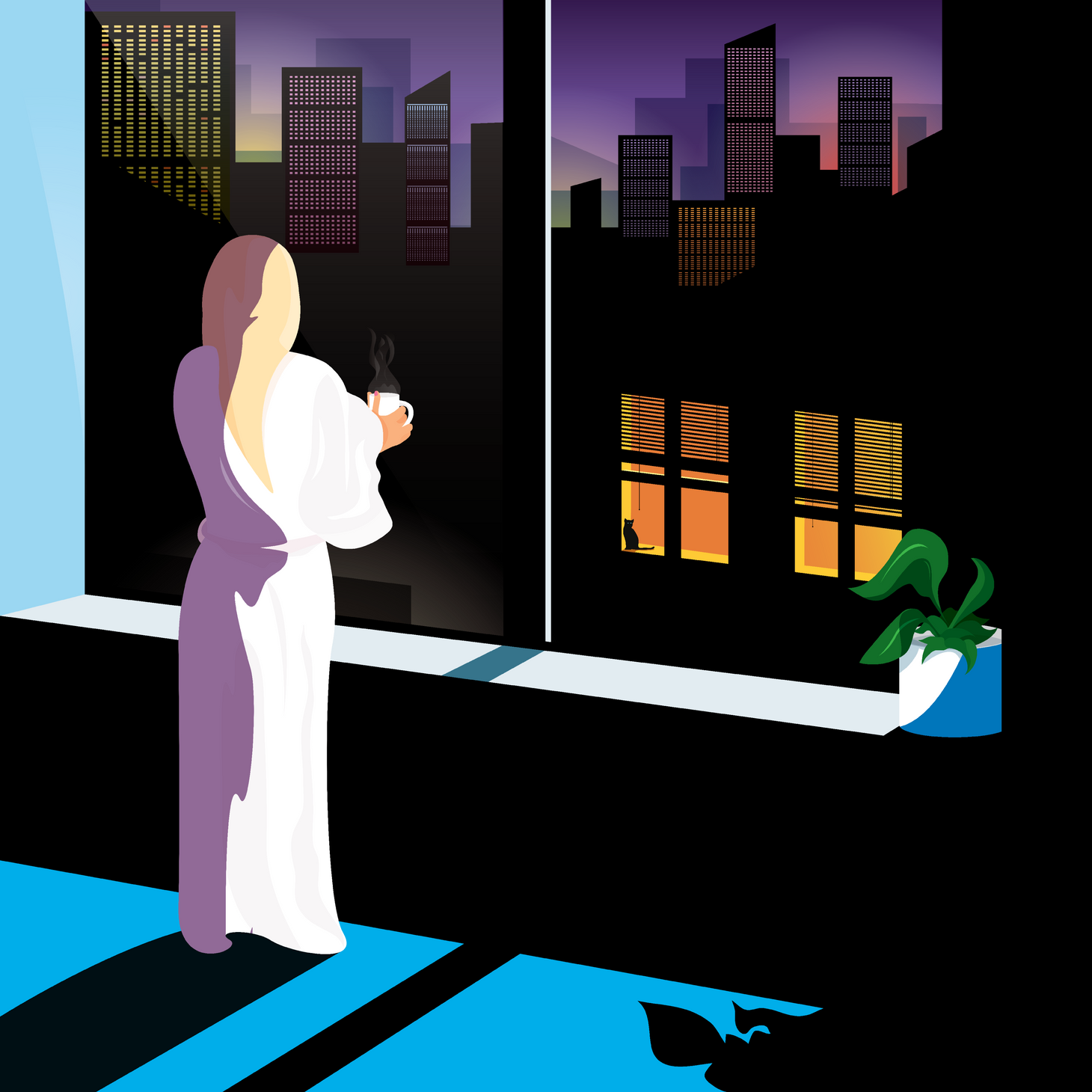Why is it so hard to change?
Does change feel like two steps forward and two steps back? You are not alone.

Screaming with strangers
The sweat dripped down my face as I sat in a circle of people who until recently had been strangers. I was 20 minutes into beating the shit out of a huge pillow with a bat. On the pillow lay a smattering of paper whereon I had previously written down a series of ‘patterns’: parts of the way I had learned to live in childhood that had been running my life in unconscious ways as an adult.
The woman next to me was shouting. Standing above her pillow and screaming No fucking more!
Where was I? How did I end up here? Did I want to be here? Was this brilliant work or completely crazy?
I had found my way to the Hoffman Institute at the suggestion of two of the more accomplished and thoughtful people I have ever met. I was thus inclined to lean into the 7-day process in spite of my reservations.
As a long-time founder/CEO turned coach, I have been privileged over the last 20 years to experience quite a variety of professional development, personal development, coaching, therapy, retreats, etc.
I have attended CEO and coaching boot camps, a 10-day silent meditation retreat, a 10-day quest, and more. And in spite of my early hesitations, I must admit my time at Hoffman was the most transformational work I have ever experienced.
My time at Hoffman transformed my understanding of myself as a human as well as my work as a coach. Since completing Hoffman, I have integrated much of Hoffman’s teachings into our coaching work at Sanity Labs. The most critical inclusion is Hoffman’s teaching on patterns which I will share here. If you would like to learn more, I would suggest this helpful overview of the full Hoffman approach. Hoffman did not invent the idea of patterns, but they have developed a profoundly effective approach for identifying and addressing them. Thus my excitement in integrating their approach into my own work.
What is a pattern?
A pattern is a belief we take on in childhood as a result of the way of living that is modeled for us by our parents or primary caretakers. In the earliest years of our lives, we are not capable of differentiating from our parents nor of evaluating their behaviors as positive or negative. In order to survive, we simply accept their behaviors as the right way. We mimic their way of behaving in order to ensure we retain our position in the family, are cared for, and therefore, survive.
Patterns thus tend to look like us mimicking the beliefs or behaviors we see our parents exhibiting. (Occasionally, they also show up as the inverse of what beliefs or behaviors we see. An example might be a reaction of chaotic living after experiencing a parent who was overly controlling.)
It may be helpful to understand patterns as:
- Conditioned: we learn them from others
- Automatic: when facing a stimuli, we respond without thinking in our pattern
- Reactive: we are not planning to live out of a pattern, we do it in response to a trigger or stimuli
Examples of patterns I often see in founders and leaders include:
- Nothing I do is enough
- I am alone; it is all on me
- The world is an unsafe place
- It is my job to keep everyone safe
- Achievement comes through pain and struggle
- Do not trust others
- I feel enough by achieving
- When I do achieve, I will move the goalposts
Most leaders look into coaching when they have some sense that what got them to this point is not what is going to help them go forward. Often this shows up as suffering, burnout, or ineffectiveness in the role.
One way of understanding this state of being in the arc of leadership is that the patterns that were effective or tolerable in prior years are not anymore.
For example, a founder/CEO might find that in childhood, college, and even in her early years a pattern of ‘It is all on me’ was quite effective. She was responsible for her studies. In her earliest jobs, as an individual contributor, she excelled. As a founder, in the early days, she (and perhaps her co-founders) did in fact do most or all of the work. Thus the pattern was effective. But a pattern of ‘It is all on me’ becomes pretty difficult to maintain while trying to scale an organization for greater leverage. A leader carrying this pattern will take on too much work, will micromanage, and will certainly burn out.
In the above scenario, in coaching work, we might look at the way this leader is carrying her CEO role. We might also look at how the organization is structured and what working norms are present with an eye toward helping her find some relief from the overwhelming load.
But if we do not address the underlying pattern, this leader will not change. She will find other reasons to take on more, or to not trust the team, in order to reinforce her belief that it is in fact all on her. She will do so because her subconscious believes that this pattern is tied to her very survival. The oldest parts of our brain do not solve for well-being, they solve for survival. And this CEO is surviving, but she is not thriving.
For her to thrive, we must free her of the pattern and help her look at what it is to reshape her approach to work and leading from a more authentic and helpful place.
The cycle of change
A client recently shared with me in session his experience that no matter how hard he worked, he never had enough time or resources to succeed.
As I began to ask how far back in his life this experience went, he shared about his childhood and approach to life that his father had modeled for him. He had grown up with modest means, and his dad (and grandfather) had explicitly and implicitly modeled for him a key life belief that there is never enough.
I introduced the idea of patterns and walked him through the way they show up and dictate our lives. He identified his beliefs on enoughness as a pattern and asked how we might help him be free of these beliefs.
I introduced him to the Cycle of Change. And we helped him move through and release the pattern in the session.
This is some of the most powerful work we do in coaching because it moves behind helping clients simply understand or explain the problems they are facing and into the psychological work of altering the subconscious operating system that is holding them back.
Below is a short introduction to how we approach this change work.
The cycle of transformation
When helping a client find freedom from a pattern, we move through four distinct steps:
- Identifying the pattern
- Physical and verbal expression of change
- Compassion for self and others
- Laying the ground for the new
Identifying the pattern
The first step is to name the pattern. There is no need for this to be perfect or right; it is enough to simply put a label on the belief that feels right to you.
It is important to identify, as you are able, from which parent or caretaker you learned this pattern as well as the parent or caretaker from whom they learned it. (i.e. I learned this from Mom who learned it from Grandpa.)
Physical and verbal expression of change
The next step is to physically and verbally express your desire to release yourself from the pattern. While this was initially the part of the process that gave me greatest discomfort (hence my hesitation hitting the pillows with bats!), I have come to find it as powerful and critical. And there is a lot of scientific data backing up the efficacy of this somatic work.
Any form of expression is fine. You could write the pattern on a piece of paper and then rip it up while speaking or shouting out loud your desire to get rid of this pattern. You could put it on a sticky note, attach it to the bottom of your shoe, and walk around on it while speaking out loud your determination to stop living with this pattern. Anything you can think of that marries physical expression with your voice is great.
Compassion for self and others
The third piece is to hold compassion for yourself and for those from whom you learned the pattern. It may be in steps 1–2 above that some anger came up, and that is totally welcome…even important. But this part is about compassion. You picked up this pattern because you did not know any better and you wanted to survive. And so did the person from whom you learned the pattern.
You can do this by simply closing your eyes and thinking of yourself as a child, and the person from whom you learned the pattern as a child, and holding compassion for each of you having done the best you could at the time.
Laying the ground for the new
Finally, you want to take some space to explore how you would like to live without this pattern. This can be done effectively through visualization or meditation. Or, if you are more comfortable, sitting in silence and then journaling can also be effective.
Call to mind a scenario in which you were living by the pattern in question. Remember how you behaved and what you believed as a result of the pattern.
Next, ask yourself how you might have shown up in the same situation had you been free of that pattern. How would the authentic, real you have shown up without that pattern? How might you have most liked to have shown up?
Write down whatever comes up.
Moving ahead, as you approach situations where the old pattern would have been at play, you might invite yourself to pre-process the time by envisioning or journaling about how you intend to show up in the situation free of the pattern you have lived in the past.
Giving it a try
If you are curious about integrating pattern work in your own efforts at change, the details above are enough to get you started. Simply spending half an hour with your journal and identifying the patterns that are causing the greatest challenges in your life and work is a great place to start.
You might then pick one pattern to start with and take it through the Cycle of Transformation on your own.
With some patterns, you might experience overnight change. That is wonderful if it happens. Others, particularly core patterns (those you were trained in most strongly), may take more time and more effort. You may find yourself returning to the pattern during difficult days. Or, most likely, you will find yourself somewhere in the middle: the next time the pattern shows up you will be more aware of it and less driven by it. As you continue to work with the pattern, you can find your way to complete freedom even from your heaviest patterns.
Change is possible
If you find yourself struggling in some particularly painful patterns or experiences today, take heart.
You are not alone. It is human to struggle; and it is human to get stuck in the ways of being we learned as children.
But it is also possible to find change and freedom.
If you would like support in your own work, please do not hesitate to reach out. I would love to hear from you.
In the meantime, wishing you peace and ease in the midst of your own journey.
With love from LA,
Matt
Sanity Notes Newsletter
Join the newsletter to receive semi-weekly updates in your inbox.


